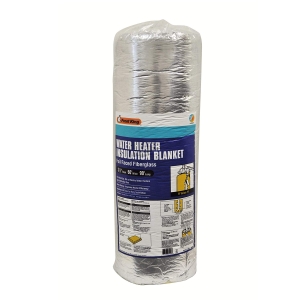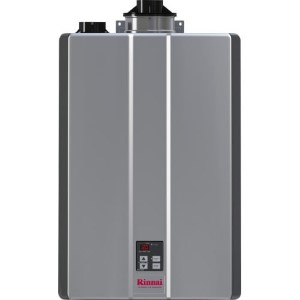- Home
- Water Tank Heater
- Water Heater Insulation Blanket
Water Heater Insulation Blanket Buying Guide & Installation Tips
How to install a water heater insulation blanket on the gas and electric models. Find out how to select and buy the right water heater blanket - jacket, improve efficiency and save on energy.
Do I need a water heater blanket?
 Insulation blanket
Insulation blanketAn insulation blanket or jacket is designed for water tank heaters only, not tankless.
The reason for the installation is that every gas or electric water heater has standby heat loss from the hot water stored inside the tank and further through its walls. Most of the heaters are equipped with foam insulation which is one to two inches thick, and those which are high efficient might have thicker 3" insulation.
If you don't know the R-value of the heater's insulation, and you are not sure should you buy an insulation blanket or not, do the following test. Touch the heater, and if it is warm to the touch, the heater needs additional insulation.
Even with the thicker built-in foam insulation, there is an energy waste as the gas, and electric water heaters are usually installed in the garage, basement, or any other unheated room.
By insulating a water heater and plumbing pipes, you will increase its efficiency and reduce the loss. Also, proper insulation of the room will allow your water heater to work much easier.
Installing a water heater blanket is one of the most used, cheap, and popular ways of reducing standby heat loss and increasing hot water temperature by a few degrees.
Buying a water heater insulation blanket
The recommendation is to buy a water heater insulation blanket that will fit the tank size perfectly. A blanket with a high R-insulation value is the best, and with the price of 20-50 bucks, it is affordable. It usually pays for itself in a couple of months. Installing a blanket brings savings, so you should not think twice, especially during the wintertime.
Insulation blankets can be found online and in any hardware store. Precut insulation kits are what you should look for as it contains everything you need. The only thing that you should know before buying one is the capacity of your heater - 30, 40, 50, 65, or any other tank size.
Installing an insulation jacket
Before installing a water heater blanket, make sure to be familiar with the instructions. A blanket installation is simple and does not require any special tools (razor knife and tape measure only) or skills, and the installation is harder on gas tank-type units than the electric ones.
In both cases, make sure to turn off the power to the heater before any work.
When wrapping the heater do not block any vents, connections such as TPR valve, drain valve, access panel, or installing close to the pilot light. Instead, cut out a section of the wrap with several inches of clearance around the above elements. Do not insulate the top of the gas heater as it could catch fire from the heat generated by the flue gases. Electric heaters do not have an exhaust, so make sure to cover the top.
Cut the blanket so it doesn't extend below the drain valve.
Wrap the blanket around the tank but be sure not to overlap the edges. Cut the insulation a few inches larger than the top, fold the edges down and tape it to the side of the tank. Once wrapped, tape or tie the blanket snugly - do not squeeze more than 20% of its thickness.
After you are done with the installation, make sure that the blanket is not torn, gaping, or bunched as it might reduce its effectiveness.
- Find Plumbers In Your Area -
Summary
A water heater insulation blanket should be just one step in preserving the energy and keeping the water heating environment-friendly. If you take into account that nearly 20% of all of the energy used in a home goes toward water heating, you will see why installing a water heater blanket makes sense. In general, the blanket saves up to 10% of the energy used for water heating. According to Energy Savers, there is a reduction from 25% to 45% in standby heat loss.
Also, it is not recommended for new high efficient heaters whose factory built-in foam insulation has R factor 16 or higher. This information can be found on the yellow Energy Guide label on the manufacturer's data plate.
Related
- Home
- Water Tank Heater
- Water Heater Insulation Blanket



